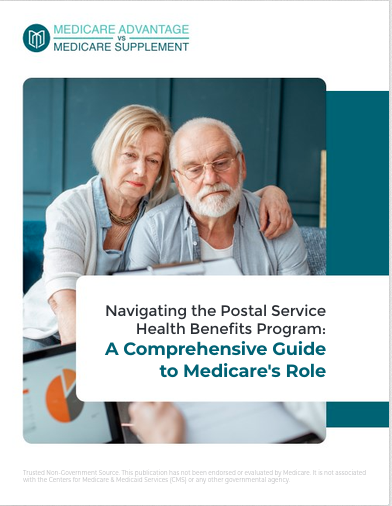Key Takeaways
-
Medicare covers a lot, but there are hidden expenses that can add up quickly if you’re not prepared.
-
Understanding these costs in advance can help you budget and take advantage of strategies to reduce your out-of-pocket spending.
The Hidden Costs of Medicare You Need to Know About
Medicare is a great healthcare option, but it’s not free—and some costs can sneak up on you if you’re not paying attention. Even with Medicare covering hospital stays, doctor visits, and prescriptions, there are still gaps that can lead to unexpected bills. If you’re not careful, these hidden costs could put a dent in your budget. Here’s what you need to watch out for and how you can keep your expenses under control.
1. High Deductibles and Cost-Sharing for Hospital Stays
Medicare Part A covers inpatient hospital stays, but there’s a deductible you have to meet before coverage kicks in. In 2025, that deductible is $1,676 per benefit period. Unlike an annual deductible, this resets each time you’re admitted after a 60-day gap, meaning multiple hospital stays could mean multiple deductible payments.
-
How to Reduce Costs:
-
If you anticipate needing hospital care, set aside savings to cover the deductible.
-
Consider options that help with hospital costs, such as supplemental coverage.
-
2. Outpatient Services Can Add Up Quickly
Medicare Part B covers outpatient services like doctor visits, lab tests, and medical equipment. But you have to pay 20% of the Medicare-approved amount after you meet the deductible, which is $257 in 2025.
-
How to Reduce Costs:
-
Choose doctors who accept Medicare assignment to avoid excess charges.
-
Use preventive services covered by Medicare to reduce the need for costly treatments later.
-
3. Prescription Drug Costs Beyond the Premium
Medicare Part D helps cover prescription drugs, but you’re still responsible for some costs:
-
Deductible: In 2025, this can be as high as $590.
-
Copayments and Coinsurance: Even after meeting your deductible, you may have out-of-pocket costs each time you fill a prescription.
-
Out-of-Pocket Cap: Medicare now limits out-of-pocket spending on prescription drugs to $2,000 per year—a huge relief, but still a cost to plan for.
-
How to Reduce Costs:
-
Ask your doctor about generic drug options.
-
Use Medicare’s drug plan finder to compare costs and choose the most affordable option for your prescriptions.
-
4. Dental, Vision, and Hearing Coverage Gaps
Original Medicare does not cover routine dental, vision, or hearing care. That means:
-
No coverage for dental cleanings, fillings, or dentures.
-
No coverage for routine eye exams or eyeglasses.
-
No coverage for hearing aids or hearing exams.
These services can be costly, especially hearing aids, which can range into thousands of dollars.
-
How to Reduce Costs:
-
Look into stand-alone dental and vision plans or discount programs.
-
Take advantage of community clinics or programs that offer lower-cost care.
-
Ask about manufacturer discounts or payment plans for hearing aids.
-
5. Long-Term Care Isn’t Covered
Many people assume Medicare covers long-term care, but it only covers short-term stays in skilled nursing facilities after a hospital stay of at least three days. For longer-term care, like assisted living or nursing homes, you’re on your own unless you qualify for Medicaid.
-
How to Reduce Costs:
-
Consider long-term care insurance if you’re planning ahead.
-
Look into Medicaid eligibility if you anticipate needing long-term care.
-
Plan with family members to explore caregiving options at home.
-
6. Penalties for Late Enrollment
Signing up for Medicare on time is crucial, because late enrollment penalties can make your costs higher for life.
-
Medicare Part B: If you don’t sign up when first eligible and don’t have other coverage, you’ll pay an extra 10% for every 12-month period you were eligible but didn’t enroll.
-
Medicare Part D: A late enrollment penalty applies if you go 63 days or more without creditable prescription drug coverage after becoming eligible.
-
How to Reduce Costs:
-
Enroll in Medicare as soon as you’re eligible to avoid penalties.
-
If you’re still working past 65, check that your employer’s plan qualifies as creditable coverage.
-
How to Manage These Costs and Keep Your Budget on Track
Medicare costs can add up quickly, but there are steps you can take to protect yourself from unexpected bills. Here’s how:
-
Use Preventive Care – Medicare covers many preventive services for free, including screenings and vaccinations. Staying on top of your health can help you avoid costly treatments later.
-
Compare Plans Every Year – Your Medicare costs and coverage can change annually. Reviewing your options during Medicare Open Enrollment (October 15 – December 7) can help you find a plan that better fits your needs.
-
Ask About Financial Assistance – If your income is limited, programs like Extra Help and Medicare Savings Programs may help with costs.
-
Budget for Healthcare – Set aside savings for deductibles, copayments, and unexpected medical expenses.
Plan Ahead to Avoid Medicare Cost Surprises
Hidden Medicare costs can take you by surprise, but with a little planning, you can keep your healthcare expenses under control. Staying informed, reviewing your coverage regularly, and looking into cost-saving strategies can make a big difference. If you need guidance on your Medicare options, talk to a licensed agent listed on this website for professional advice.










